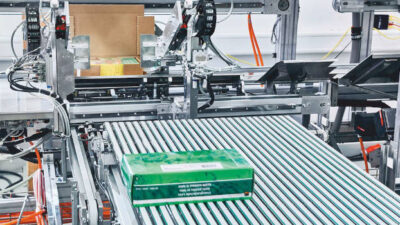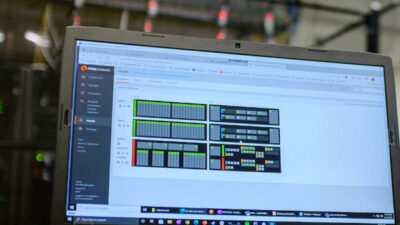Innovation is often more about developing a new use for an existing technology than it is about creating a new technology or product from scratch. Recently, I've come across two new innovations—both of which grew out of initiatives to help companies save energy and money—that really grabbed my interest.
Innovation is often more about developing a new use for an existing technology than it is about creating a new technology or product from scratch. Recently, I’ve come across two new innovations—both of which grew out of initiatives to help companies save energy and money—that really grabbed my interest.
One of these is an array of non-invasive sensing and wireless technologies from Cypress Envirosystems. Some of their products, like the Wireless Gage Reader, literally snap on to existing dial gages to capture and transmit the readings wirelessly. How do these gage readers do it? According to Harry Sim, CEO of Cypress Envirosystems, the readers optically capture an image of the analog gage reading, convert it to a digital reading, and enable the data to be transmitted wirelessly to a central or mobile application.
More solidly on the sustainable engineering front is Cypress’ Wireless Steam Trap Monitor. The steam trap monitor detects faults and alarms on error to avoid leak losses with failed traps, which—on an 1/8-inch orifice pipe—can cost up to $5,000 a year. Considering that most plants have a 15–20% failure rate on the hundreds of steam traps typically installed in the steam distribution system, this adds up to a considerable savings.
Other new advances that have caught my attention recently are the new sensors coming out of Rockwell Automation’s Advanced Technology Laboratories.
As an example of these sensors, Fred Discenzo, diagnostics and sensors manager, Rockwell Automation, points out a multi-element sensor used to probe the chemistry of fluids. These multiple-sense elements can fit on a single substrate (10 microns in size), and be immersed into a fluid to continuously monitor temperature and conductivity by using a varying AC signal to probe the sense elements. “This is useful in probing polar compounds to detect materials or contaminants that could not otherwise be detected with a DC resistance sensor measurement,” Discenzo says.
Another unique, new sensor from Rockwell is one used to monitor the torque of a rotating machine in real time. In this sensor, a photoelastic material exhibits a change in index of refraction as a function of the strain or how much it has been deformed.
Rockwell’s labs have transformed this plastic into a torque sensor that can be clamped onto the shaft or used as part of a coupling. “We have a processor that interprets that signal using an artificial neural net and gives us a high accuracy measurement of the amount of angular strain or deformation of that part,” says Discenzo. He also notes that, using this new sensor allows testing to be done for less than $100—as task normally performed by commercial torque sensors that typically cost several thousand dollars.
For more information on these innovative products, see www.controleng.com/CA6643164.html



